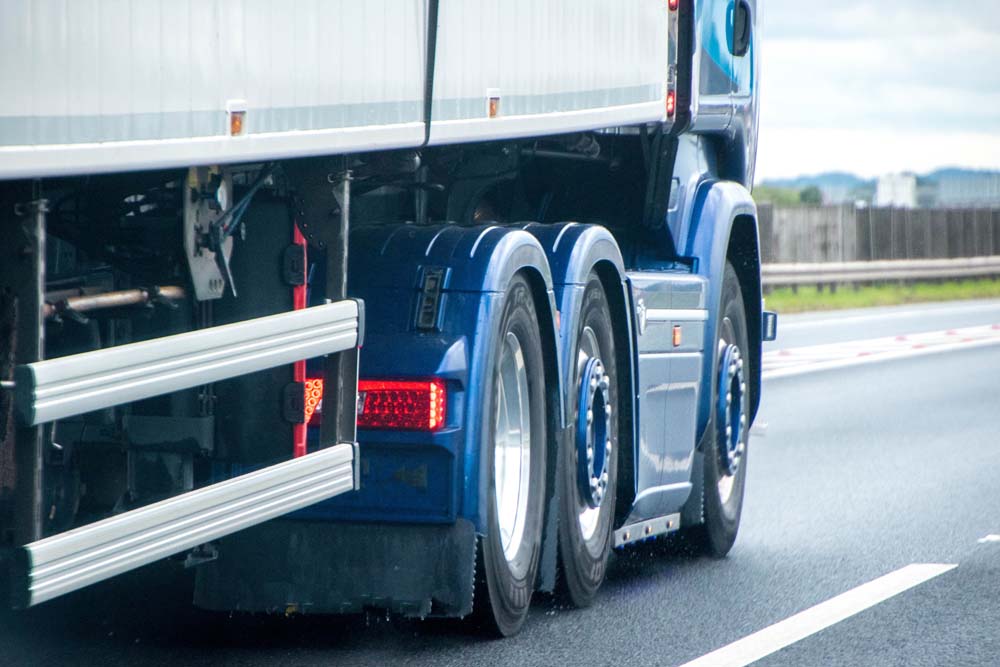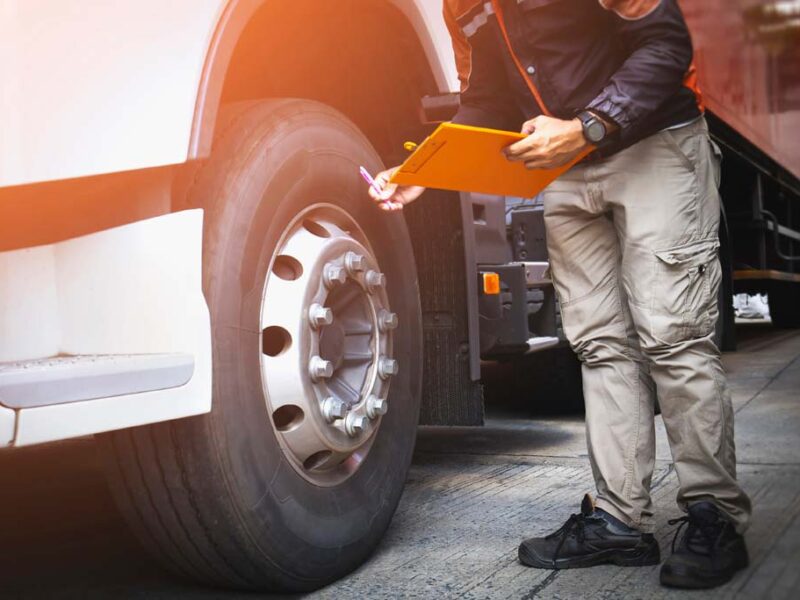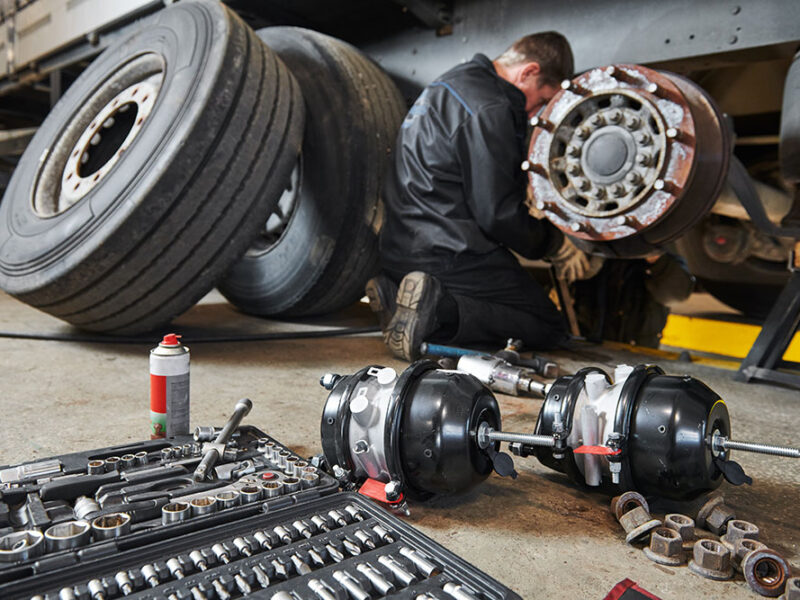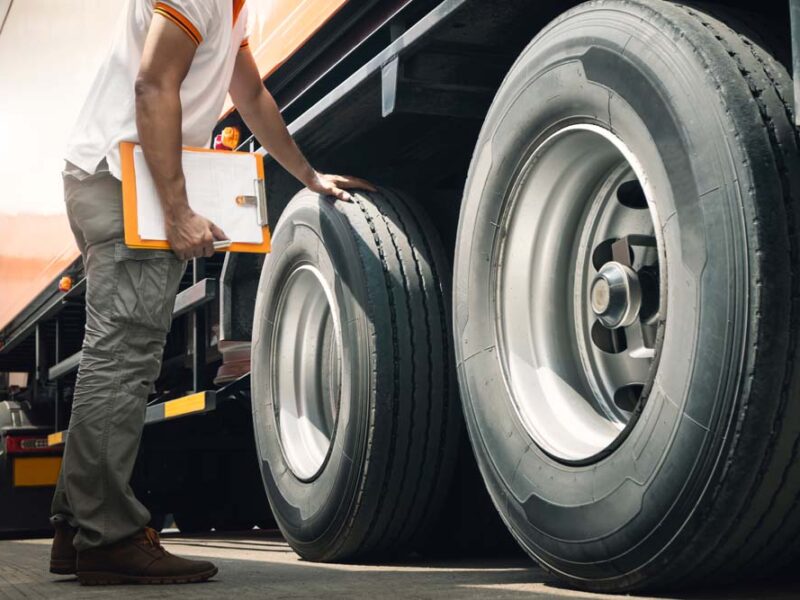The DVSA has recently highlighted some confusion about the use of "HIAB" loader lorries regarding the length and maximum weight of these vehicles.
An HIAB truck or crane allows the user to load or unload heavy objects that the same vehicle is transporting. They are usually made up of a crane mechanism mounted on a modified tractor chassis. The name HIAB is an abbreviation of "Hydrauliska Industrial AB", a company founded in Hudiksvall, Sweden in 1944 by Eric Sundin. Eric Sundin was a ski manufacturer who saw a way to utilise a truck's engine to power "loader-cranes" through the use of hydraulics, thereby saving time and cost for loading and unloading large items from vehicles.
The DVSA has noticed an increased number of these types of Heavy Goods Vehicles (HGVs) being used on the UK roads and has been involved in prosecutions where the vehicles had been considered to be too long or overweight. In a recent Court of Appeal ruling a vehicle fitted with a HIAB and towing a trailer was found to be over the permitted 16.5m length. The Court of Appeal found in favour of the DVSA conviction that the length of the vehicle is measured to include all parts of the vehicle including the parts the crane is mounted on. Some manufacturers of these vehicles had been indicating to operators purchasing the vehicles that this was not the case and/or that they could run "HIAB Tractor Units" under the Special Type General Order (STGO) regulations.
These regulations govern the special types of vehicles and loads that do not meet the Road Vehicles (Construction & Use) Regulations 1986 (known as C&U Regs) and the Road Vehicles (Authorised Weight) Regulations 1998 (AW Regs).
Vehicles most likely to be used under an STGO are:
- Abnormal indivisible loads - i.e. loads which cannot be divided into 2 or more loads to be transported by road,
- Mobile cranes: specially built or adapted for lifting operations, i.e. cannot transport a load itself,
- Engineering plant - a moveable piece of plant or equipment which is a motor vehicle or trailer specially built for engineering operations, and
- Road recovery vehicles, i.e. vehicles that are specially built for recovering broken-down large vehicles.
The ruling in the Court of Appeal makes it clear that HIAB vehicles do not come under the remit of the STGO and therefore the length and weight of the vehicle must comply with the C&U and the AW regulations. that is to say: The length of the tractor unit with the trailer attached must not exceed the permitted 16.5m. The combined weight of the tractor unit, and the trailer & load it is pulling must not exceed the 26 tonne limit.
Within the C&U and AW regulations there are allowances for any apparatus that extends beyond the rear and/or front of the total length of the vehicle. These overhanging sections can be subtracted from the total length and do not count towards the total length permissible under the regulations. However, if a HIAB crane has been fitted and forms part of the trailer and/or tractor unit it will be included in the total length of the vehicle.
Operators would do well to ensure before purchasing an HIAB unit that the vehicle manufacturer's interpretation reference the STGO regulations is correct and further, that having bought such a vehicle that any loads being transported (that do not qualify as "special loads") should comply with the length and weight set down in the C&U and AW regulations.
Despite the inventor, Eric Sundin's aim to save time and cost in the loading and unloading of vehicles through the use of his hydraulic crane being attached to the load vehicle, the use of HIAB equipment on the UK's roads means that Operators do need to spend time ensuring that such vehicles are being used correctly, and comply with the applicable regulations.
As always, if any of the issues mentioned above might be affecting your transport operation, then call us on 01279 818280 or email by clicking here. We are here to help.

More News and Insight

DVLA Confirms New Rules for Professional Drivers Living with Diabetes
From Friday 7th November 2025 the rules were changed to allow diabetic drivers of PSV’s and HGV’s to monitor their glucose levels using Continuous Glucose Monitoring Systems….

Carrying Your Own: Horses to Widgets? Do you Need an O Licence?
The DVSA recently released a press release about the rules for transporting horses in horse boxes and trailers following an update on the guidance about using a tachograph in the vehicle being used to transport the animals…

The Senior Traffic Commissioner’s Statutory Guidance
The value of The Statutory Guidance Documents and the importance to operators, nominated transport managers and other professionals involved in the operation and driving of large commercial vehicles cannot be overstated…

Walkaround Checks – Where Road Safety Starts
Every day, often before the sun is above the horizon, hundreds of thousands of commercial vehicles are started up by their drivers and then they head out on to the UK’s road network to transport goods or passengers from one point to another, often with demanding time constraints thrown into the mix…

Traffic Commissioner’s Annual Report 2024/25: “Don’t Look Back in Anger”
Time has flown by and once again we find that the schools are back after the long summer break and the Office of the Traffic Commissioner has issued its annual report to the Secretary of State, providing a review of the year…

An Apple a Day to Keep the DVLA Away – A review of the DVLA’s Rules on Health Checks for Professional Drivers
There has been some discussion in the industry trade press recently that has highlighted proposed changes to how the disease of diabetes is monitored in professional drivers by the DVLA. One article in RouteOne Magazine stated that…

Light Goods – Heavyweight Industry: The DVSA’s New LGV Strategy
While relatively small in overall physical size light goods vehicles (LGVs) are now a large part of the UK road transport industry. There are currently estimated to be over 5.1 million light goods vehicles on UK roads today…

Employment Law Update – A tale like Scylla & Charybdis
Operators currently face their own real time nightmare in the form of a modern day version of the Greek mythological tale of Scylla and Charybdis (where sailors faced a narrow strait through which they had to pass which had a monster on one side and a whirlpool on the other!)…

Labour Government – Employment Rights Bill – What Will It Mean for Transport Businesses?
In October 2024 the Deputy Prime Minister, Angela Rayner set out her intention to reform the employment rights held by employees in the UK. In a press release issued at the time she is quoted a saying…

Revisiting the DVSA’s Guide to Maintaining Roadworthiness
In April 2025 the Driver & Vehicle Standards Agency (DVSA) issued the latest edition of its Guide to Maintaining Roadworthiness.

The Wheels on the Bus go Round & Round….but how do they Stop?
At the tail end of 2024 a Public Inquiry was held in front of Traffic Commissioner Kevin Rooney where the subject of brake maintenance practices was called into question…

Maintenance Provision Rating Scheme for Commercial Vehicle Workshops is Launched
One of the key tenants of running a commercial vehicle operation, whether ‘HGV’ or ‘PSV’ is that the maintenance of the vehicles is paramount. For some operators this will mean having their own maintenance facilities and teams to look after their fleet of vehicles in house, but the majority of operators in the UK are reliant on 3rd Party maintenance providers…
